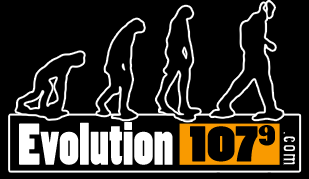This article is a follow up to the last one I wrote, which is about seasonal depression. If you haven’t read that one, you should go check it out.
Winter is coming and darkness is upon us. It’s that season where the sun goes down at 4pm, you feel miserable when you try to wake up in the morning because there is no light, and the damp Vancouver winter cuts through you like a knife. What a treat.
In my other article I was complaining about November and how there is nothing good about it and there’s nothing to look forward to. I stand by that statement, and I’m greatly relieved that December doesn’t have the same hopelessness. With December comes the holiday season.
We all know that Christmas had a lot of magic when we were kids. I get a lot of videos popping up on my TikTok and Instagram of nostalgic early-2000s Christmas compilations, and somehow the people who have put these together have managed to encapsulate the feeling of Christmas from those years perfectly. People have come up with photos that show a perfect image of what Christmas looked like to a middle-class suburban family in 2004. These photos have the exact energy and glow that exists in your deepest memories when you think of Christmas morning. I know you have this image in your head right now. Christmas was the same for all of us those days.
It can be really difficult to get excited about Christmas now that we’re older. Life seems so overloaded with responsibility, and it’s not the kind that’s really intense and then just ends suddenly, like when we were kids and school ended for winter break. Adult responsibility is unyielding. Our to-do lists are endless and the tasks regenerate faster than you can fulfill them. Growing up also means that we often start prioritizing our responsibilities over the things that make us feel good.
It’s common when you grow up to feel like everything has lost its sparkle. When you’re a child the world seems to have a certain glow to it, and with every year that passes, that glow seems to fade a little more. Adulthood brings a certain air of melancholy in the sense that realism has dulled the magic that the world once held. How do you bring childhood magic back to life as an adult?
I recently found myself involved with a group of people who made life feel like it was still glimmering with a kind of youthful radiance I hadn’t felt since I was a teenager. The group was composed of individuals who were morally questionable to say the least, so it didn’t last very long, but each interaction we had together felt like it was loaded with explosives in the best way. Every moment I spent with them had a sort of brilliance to it, like a star on the brink of supernova. Everything was more vibrant; it truly seemed like life just had more colour with them. It was like being attached to a defibrillator and jolted back to life. Despite having to leave it behind, I look back on my memories with that group fondly because they showed me that the spark we’re all looking to rekindle is still out there.
The thing that was so special to me about this group was that everything they did was completely different to what I normally do in life. Everything we did together was something completely new to me, and I had no familiarity with any of the situations I found myself in with them. I often felt very out of place and uncertain, but it came with a certain thrill that I hadn’t felt in years. For that reason I believe that magic we all used to feel is found in discovery and exploration.
As children, we don’t have enough life experience to know what the outcome of any given situation is going to be. We haven’t seen the world from enough different angles to know what is going to come of any particular experience. Everything is fantastically unpredictable because you simply haven’t lived enough to have seen things from all sides yet. That lack of perspective means that there is a constant sense of wonder, and anticipation of the unknown; everything is a new possibility for something different and amazing and magical. I believe that right there is the secret to treat the dullness and monotony of adult life. We just need to mix in a little more of the unexplored.
To give this a bit more perspective, the Ancient Greeks said that the gods envied mortals because our lives are ephemeral. Human existence is fleeting, and we are subject to fate and chance. Meanwhile, the gods always knew they were immortal, and no matter what happened, there was never a chance of them dying. Continuance was just a guarantee for them, and thus the anticipation of the unknown was simply not feasible for them. The thrill of chance was absent.
It’s ironic though, because many adults also fear the unknown. Many of us form a bit of an aversion to the feeling of uncertainty, and we often find it uncomfortable. True excitement in life is born from that lack of certainty, anything that you are too sure about is going to lack spark. Magic exists in unfamiliarity.
So embrace the unexplored. Don’t let your obscene bucket list fall by the wayside. Go take risks. Do dumb stuff. Bad decisions make great stories. Your inner child will thank you.
I’m gonna go google some weird stuff to do in Vancouver.
Love you. <3










